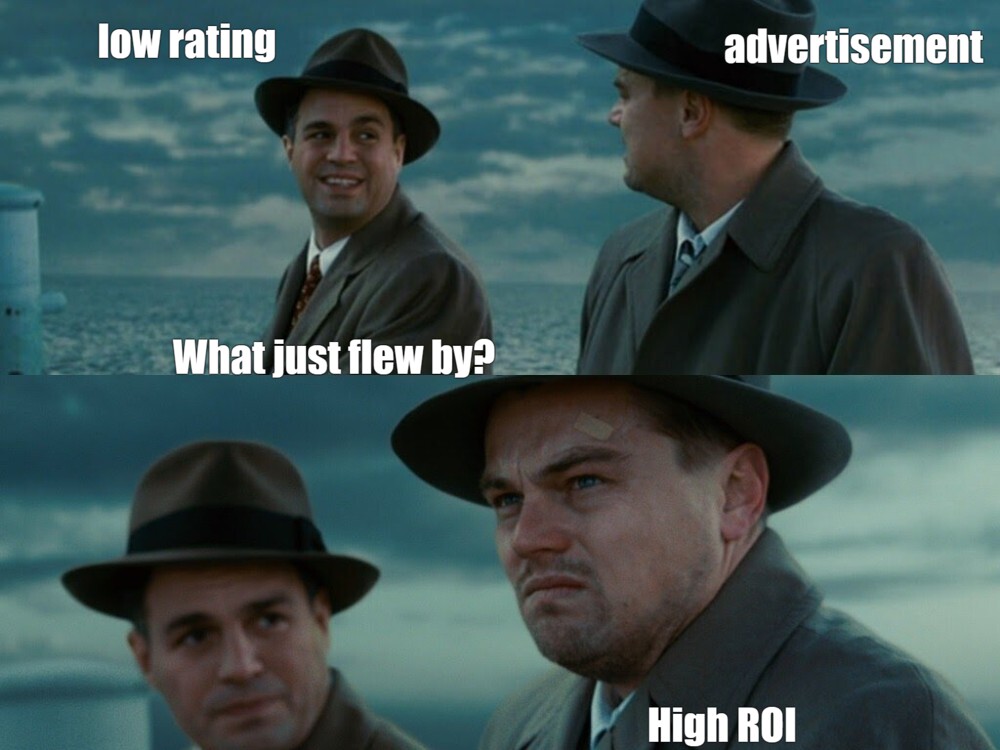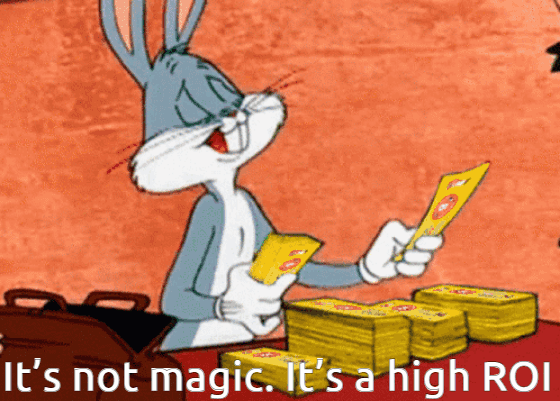The Ad Rank in Google Ads is a key factor that affects how well your advertising campaigns perform and how much profit they generate. Understanding how to improve your Ad Rank is important for getting the best ROI.
In this article, the team at YeezyPay, which provides access to Google trusted agency accounts, will outline clear and simple strategies that even beginners can use.


However, it’s not smart to overpay for a click. Google has rules that adjust the price down to the minimum needed to win the auction. This minimum price is typically just one cent higher than your closest competitor’s bid. As a result, the actual cost you pay per click will often be lower than your maximum bid, unless you have specific bid adjustments or optimized CPC set up.
To figure out the actual cost per click, you can add $0.01 to your quality score and then divide your competitor’s Ad Rank by this total. For example, if your maximum CPC is $2, your quality score is 4, and your Ad Rank is 5, while your competitor has a maximum CPC of $0.70, a quality score of 8, and an Ad Rank of 6, your actual cost per click would be $1.50, while your competitor's cost would be $0.60.
Increasing your quality score is generally more effective than simply raising your bid. The quality score is a key factor that affects your Ad Rank and reflects how much Google trusts your account. It is based on three main criteria: the expected click-through rate (CTR), the relevance of your ad, and the quality of your landing page. Improving these factors builds trust in your account, and agency accounts can provide significant help in this area. They offer access to advanced analytics tools and management features that can make your ads and landing pages more effective, thus raising your quality score. YeezyPay provides access to such accounts.

The expected CTR is the ratio of clicks your ad receives compared to how many times it is shown. This metric influences your final cost per click by nearly 40%. It’s crucial to note that Google compares your current CTR to your past performance rather than that of your competitors. The better your ads perform over time, the higher your expected CTR will be.
Ad relevance measures how well your ad matches the search queries of users. This is a vital metric because Google profits from each click on an ad. For instance, if someone searches for "women’s sneakers," they'll see various ads. The ad that most closely matches their search is more likely to get clicked. To boost relevance, include as many relevant keywords as possible in your ad title, description, and extensions. The more specific your ad, the higher its relevance, which might reduce your cost per click by up to 20%.
Ad extensions provide extra information about your products and make your ads more noticeable and appealing, which can lead to more clicks. Including relevant keywords in your extensions can also enhance your quality score. It’s important to regularly monitor the performance and click-through rates of your extensions, replacing or removing those that are underperforming.

Just like ad relevance, landing page relevance is important. If a user searching for women's sneakers clicks on your ad but then lands on a page featuring men’s sneakers, they are unlikely to click your ad again in the future. To ensure your landing page aligns with search queries, it should include key terms, even if they are not an exact match. Additionally, two critical factors to consider are loading speed and mobile responsiveness. Your landing page should ideally load within 3-5 seconds; if it takes longer, users may leave before it fully loads. Moreover, landing pages that do not display well on mobile devices may be penalized in search results.

Click-through rates (CTR) can differ from city to city within the same country. Google monitors these variations and tends to display ads more frequently in areas with higher CTRs. However, a higher number of clicks doesn’t always translate to more conversions. In some cases, cities with a high CTR may yield few conversions, while cities with a lower CTR might generate many.
To improve your Ad Rank, you should focus on increasing CTR in regions where conversions are high. In areas with low conversions, it’s essential to analyze the purchasing process and adjust your advertising strategy, such as changing the ad structure. By making these adjustments, you can boost your Ad Rank.
In this article, the team at YeezyPay, which provides access to Google trusted agency accounts, will outline clear and simple strategies that even beginners can use.
What is Ad Rank and what factors influence it?
Ad Rank determines the position of your advertisement in search engine results. A higher ad rank not only increases visibility but also impacts your ROI. When your ad ranks highly, it can appear at the top of search results even if you set a lower cost per click (CPC). This leads to greater exposure and, ideally, more clicks and conversions. While a high Ad Rank does not guarantee success, such as achieving sales or leads, it certainly increases your chances of reaching your marketing goals.How to improve your Ad Rank
Ad Rank is calculated using a simple formula: quality score multiplied by maximum cost per click (CPC). You can improve your Ad Rank by either increasing your bid (the most you’re willing to pay for a click) or by enhancing your quality score.However, it’s not smart to overpay for a click. Google has rules that adjust the price down to the minimum needed to win the auction. This minimum price is typically just one cent higher than your closest competitor’s bid. As a result, the actual cost you pay per click will often be lower than your maximum bid, unless you have specific bid adjustments or optimized CPC set up.
To figure out the actual cost per click, you can add $0.01 to your quality score and then divide your competitor’s Ad Rank by this total. For example, if your maximum CPC is $2, your quality score is 4, and your Ad Rank is 5, while your competitor has a maximum CPC of $0.70, a quality score of 8, and an Ad Rank of 6, your actual cost per click would be $1.50, while your competitor's cost would be $0.60.
Increasing your quality score is generally more effective than simply raising your bid. The quality score is a key factor that affects your Ad Rank and reflects how much Google trusts your account. It is based on three main criteria: the expected click-through rate (CTR), the relevance of your ad, and the quality of your landing page. Improving these factors builds trust in your account, and agency accounts can provide significant help in this area. They offer access to advanced analytics tools and management features that can make your ads and landing pages more effective, thus raising your quality score. YeezyPay provides access to such accounts.
The expected CTR is the ratio of clicks your ad receives compared to how many times it is shown. This metric influences your final cost per click by nearly 40%. It’s crucial to note that Google compares your current CTR to your past performance rather than that of your competitors. The better your ads perform over time, the higher your expected CTR will be.
Ad relevance measures how well your ad matches the search queries of users. This is a vital metric because Google profits from each click on an ad. For instance, if someone searches for "women’s sneakers," they'll see various ads. The ad that most closely matches their search is more likely to get clicked. To boost relevance, include as many relevant keywords as possible in your ad title, description, and extensions. The more specific your ad, the higher its relevance, which might reduce your cost per click by up to 20%.
Ad extensions provide extra information about your products and make your ads more noticeable and appealing, which can lead to more clicks. Including relevant keywords in your extensions can also enhance your quality score. It’s important to regularly monitor the performance and click-through rates of your extensions, replacing or removing those that are underperforming.
Just like ad relevance, landing page relevance is important. If a user searching for women's sneakers clicks on your ad but then lands on a page featuring men’s sneakers, they are unlikely to click your ad again in the future. To ensure your landing page aligns with search queries, it should include key terms, even if they are not an exact match. Additionally, two critical factors to consider are loading speed and mobile responsiveness. Your landing page should ideally load within 3-5 seconds; if it takes longer, users may leave before it fully loads. Moreover, landing pages that do not display well on mobile devices may be penalized in search results.
Additional features
Beyond just cost per click and quality score, ad ranking is also affected by factors like location, the nature of the search query, device type, and more. Let’s take location as an example. The competition for ad impressions can vary significantly based on the time of day and the day of the week. In areas with a wealthier population, competitors are often willing to pay more for clicks. To stay competitive, you may need to adjust your bids accordingly.Click-through rates (CTR) can differ from city to city within the same country. Google monitors these variations and tends to display ads more frequently in areas with higher CTRs. However, a higher number of clicks doesn’t always translate to more conversions. In some cases, cities with a high CTR may yield few conversions, while cities with a lower CTR might generate many.
To improve your Ad Rank, you should focus on increasing CTR in regions where conversions are high. In areas with low conversions, it’s essential to analyze the purchasing process and adjust your advertising strategy, such as changing the ad structure. By making these adjustments, you can boost your Ad Rank.





